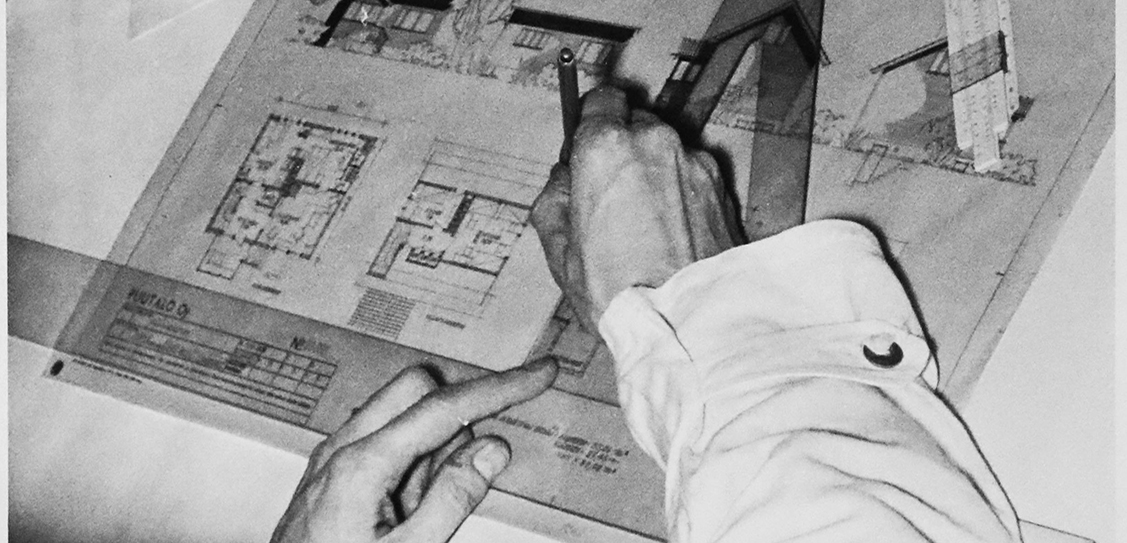New Standards presents the story of how Finland’s timber industry and architects came together to solve a refugee crisis, and in the process created a new model for factory built housing; it is an exhibition that will explore the history of the often overlooked, but internationally significant Puutalo consortium.
It will also present Puutalo as a model of mass housing that left space for individual expression at the same time as raising living standards through quality design.
Factory built timber housing is an area of huge interest for architects looking to solve the question of how we can build quickly and economically, without sacrificing quality or causing further damage to the environment. It offers the world an example of mass produced family housing that is an alternative to grand projects, demonstrating how individual identity can be celebrated in the context of standardisation, as well as a validation that design can improve people’s lives.
H. Harris, Director of Archinfo Finland, and the Commissioner of the Pavilion of Finland.
During the second world war, when Finland needed to resettle 420,000 internal refugees, the Finnish timber industry came together with prominent architects to create a system of standardised prefabricated wooden houses. New Standards will reveal the previously untold story of Puutalo company and how its prefabricated timber houses became the largest ever export of Finnish architecture. These homes with ingenious spatial distribution, practical domestic innovations and simple structural principles were designed to raise living standards and built to last. Many of them are still lived in today. Our case studies will show how these modest houses were adapted to a variety of locations and traditions as well as the changing needs of many generations of residents.
L. Berger.
Puutalo houses were developed by some of Finland’s leading mid-century architects and their archetypal exterior appearance belies the innovation that went into their structural design, spatial arrangement and domestic utility. sA large number of Puutalo houses remain in use in the 21st Century. New Standards’ main aim is to research and document the design, development and cultural and social impact of Puutalo housing.
Puutalo houses were erected in more than 50 countries around the world. The flexibility of the system design allowed for significant modification during manufacture to tailor the product to different climates and cultural traditions. Puutalo houses have proven robust enough to withstand years of use, updates and extensive modifications. A series of case studies will demonstrate the adaptability of the standardised product through documentation of how residents around the world have modified and occupied their homes.
Puutalo means “wooden house” in Finnish, and timber construction makes good use of Finland’s most abundant natural resource; forest still covers more than 78% of the land and the country is a global leader in developing new methods making use of this sustainable material.



